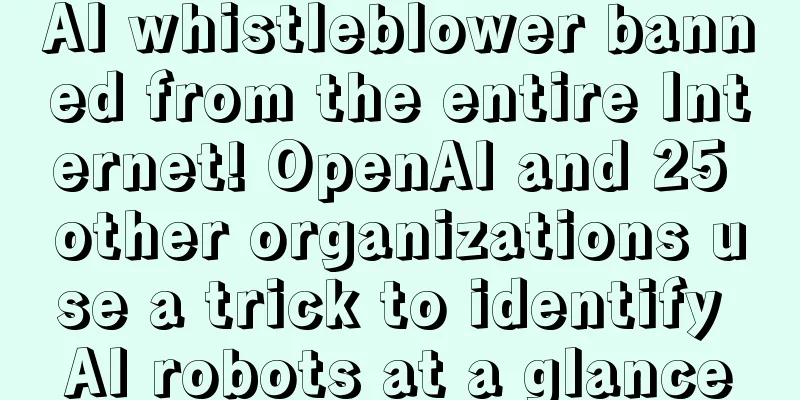How to combine private domain business with ChatGPT

ChatGPT has been launched for only two months, and its monthly active users have exceeded 100 million. Its popularity is surprising, but it also makes people worry about whether ChatGPT will replace their jobs and what its actual implementation effect will be? Remember: those who can express their needs clearly will be better able to master AI tools, improve operational efficiency, and will not be replaced! ChatGPT answer version: Private domain businesses can use ChatGPT to improve user experience and increase stickiness. For example, ChatGPT can be used to develop intelligent customer service robots, allowing users to solve problems and obtain services through conversations, thereby improving user satisfaction and loyalty. In addition, ChatGPT can also be used to generate personalized recommendation content and marketing information, recommend the most suitable products and services based on user behavior and preferences, and increase user purchase intention and conversion rate. In short, ChatGPT, as a powerful natural language processing technology, can bring more opportunities and advantages to private domain businesses. 1. Two application scenarios of ChatGPTChatGPT is usually used in two scenarios in private domain marketing: The first type is to organize activities in conjunction with Chat GPT. For example, attract users to talk to ChatGPT, and users can directly ask ChatGPT any financial questions, professional questions, and business issues they are involved in that they do not understand. This method can capture users' curiosity about Chat GPT and accumulate some private traffic for enterprises. In our previous business, we helped a company increase its user base by more than 30,000 without any publicity. The second category is to assist private domain operations in generating content. In the process of private domain operations, it is necessary to produce a large amount of activity content and industry content that is closely related to one’s own business. If our customers are mainly manufacturing companies, then we need to produce corresponding content for different manufacturing industries, such as plastic manufacturing, steel manufacturing, building materials manufacturing, etc. However, producing content that is vertical to the industry is very difficult for any private domain operator; and ChatGPT can help us quickly achieve a passing score in the production of industry content. If we can make full use of ChatGPT when doing private domain operations, it can help us accelerate the production of more content, and at the same time help us reduce 70%-80% of production costs at the organizational level. 2. Application of private domain management and conversational robotsIn fact, if we directly use ChatGPT to replace private domain operations, it will also be difficult for ChatGPT. Why?
That is to say, the output of ChatGPT is uncontrollable to some extent and difficult for us to predict. For enterprises, such as those in the pharmaceutical and financial sectors, there are very strong compliance requirements. Almost all consumers, users, and upstream and downstream partners must output content that is compliant and definitive. Faced with such a situation, ChatGPT is not a good content outputter, so companies should make a conversational robot of their own. If it is a conversational robot tailored for an enterprise, there are many customizable parts. For example, when we provided services to a large retail enterprise, we first ensured that all content and material libraries were in compliance with regulations.
That is to say, in private domain operations, when facing customers at different stages, a very clear rhythm of output is required. In other words, the content sent to customers on the first and 20th day after they added us on WeChat is not the same. So the conversational robot can make customized push notifications based on the relationship stage between the customer and us after adding WeChat. On the other hand, if our customers are high-net-worth customers or ordinary customers who are on the sidelines, the products they are interested in and the payment rates will also be different. Facing such customers with obviously different spending power, the content products we output should also be different. When facing customers with low purchasing power, we cannot give them the impression that our prices are high, because they are likely to abandon us at the first opportunity; but when facing high-net-worth customers, we need to emphasize that we only serve high-net-worth customers and make them believe that we can provide excellent services. In addition to the customer's purchasing power, we also have another dimension, which is the customer's interests and hobbies. Some information in this dimension can attract the other party's attention in reverse. For example, if we are a financial institution and we determine that a certain customer's interests may be playing ball, football or badminton, we can push some activities that the other party may be more interested in in a personalized way, thereby strengthening customer stickiness. We even launched an activity in a bank's community where customers liked singing and dancing, and we found out that this group of customers liked singing and dancing. This activity was very popular among the customers, and many users participated. So, in fact, ChatGPT is not very usable in private domain operations. It may only be applied to short-term activities or as a support tool for content producers. However, the application scenario of conversational robots is very strong. In the retail companies we served before, we finally achieved a very good effect - as a front-line retail salesperson, you can make a choice after logging into the enterprise WeChat background. I can choose what kind of person I am, someone who is easy to communicate or rigorous; someone who is more interested in reading or sports; and what products and categories I am good at selling. Then, I will choose the customer groups that I will focus on serving this time and screen them. For example, if the customer groups I want to serve are high-net-worth customers or low-spending customers, then is the purpose of this meeting to activate these customers who have not been communicated with for a long time, or to break the ice with the customers who have just started to contact? After clarifying the customer group to be served, I will then screen out a service cycle. For example, when facing a certain customer group, the background suggests that my service cycle is 7 days or 15 days. After selecting this service cycle, the background will push to me all the marketing materials and scripts for this customer group in the next 15 days. I will go through these marketing materials and scripts, and after confirming that there are no problems, the background will send them to my customer group on my behalf. By implementing conversational robots, we can efficiently deliver precise content when facing customer operations, and at the same time cover a relatively large customer base. 3. Four typical stages of customer marketing through private domainsThen a new question arises: when is the right time to use conversational robots to manage private customer base, and what kind of companies are more suitable? In fact, in my opinion, most companies can be divided into four stages in terms of private domain operations. Let’s talk about the representative achievements of each stage. Phase 1.0: Online stageThe first stage is what we call the launch stage. What does it mean to be in the online stage? It means that the company has begun to have clear requirements: the front-line team must have the probability of adding customers during the sales process, but the assessment criteria are different, it may be an 80% online rate or a 100% online rate. Phase 2.0: Organizational coordination and running-in phaseThe second stage is the stage of organizational coordination and running-in. This stage is usually more painful. For example, should the headquarters plan brand activities and marketing conversion activities? Or should the headquarters plan brand activities and different divisions plan sales conversion activities, and the front line only needs to pull users into the group? For different companies, a lot of confirmation and adjustment are needed on the boundaries of these divisions of labor. One particularly good point about doing private domain in the WeChat ecosystem is that it has many different windows to influence customers, for example, one-on-one communication, public account communication, video account communication, group communication and Moments communication. From the perspective of the impact on customers from strong to weak, one-to-one communication > video account communication = public account communication = group communication is greater than circle of friends communication, but is a high impact intensity necessarily a good thing? Not necessarily, because a high intensity of impact will also cause disturbance to customers. When it comes to delivering complex content, videos and public accounts are very good carriers for expressing such content; video accounts are more suitable for expressing simple logic in a storytelling manner; and pictures and texts can more clearly present a structured complex logic. For the delivery of complex products, such as AI products in the manufacturing industry, graphic and text content is a clearer or more suitable way of expression for the customer group. Therefore, there are a large number of tools in the WeChat ecosystem that can be used in combination to better influence customers. In the process of influencing, we can also balance the customer's feeling of not being disturbed. The process of this balance is what the headquarters, divisions and front-line teams need to sort out and clarify in their division of labor. Usually in this process, there will be a transformation from a large front desk and a small middle desk to a small front desk and a large middle desk. In the early stage, what methods can be used to better market to customers requires a lot of exploration by the front line. Then, at a certain time point, the headquarters will extract mature sales and marketing models, and deposit these models into the middle platform, so that sales in every area of the front end can call up these standardized sales plans, helping every salesperson to achieve 60 points in sales. Phase 3.0: Customer segmentation and tool classification refinementIn the 3.0 stage, private domain operations have become more refined, especially in customer management. For example, the headquarters manages opinion leaders; the divisions manage mid- and long-term customer groups and activate them in batches; and the front-line sales team manages the top customer groups and gets priority in obtaining production capacity among their own core customer groups. This customer segmentation management method will become increasingly clear in the 3.0 stage. The way to follow up with new customer groups will evolve into new processes, new tools, and new organizational divisions of labor. For example, the KOL group at the headquarters may bring in some medium- and long-term customers during the promotion and marketing process, and these customers need a process of being transferred to different regions. After the medium- and long-term customers are activated, they need to be followed up by sales, so they need a process of being transferred to the sales team. At this point in time, we will see that many companies have begun to use various user management tools based on the enterprise micro-ecosystem and WeChat ecosystem to run their business. Of course, different tools are suitable for different objects. We have also done a small inventory of tools before, and share it with you here. Phase 4.0: Automated MarketingIn the 4.0 stage, conversational robots can automate marketing and face different customer groups. Currently, more and more retail companies have reached this stage, that is, treating WeChat users as APP users and doing precise push and marketing. At this stage, I do not recommend making large push notifications based on large user groups. Instead, I recommend making more personalized push notifications based on the specific behaviors of users in WeChat conversations. Whether the user opens the app; how long they spend looking at it after opening it, etc. These behaviors will continue to influence our judgment of the customer, so that we can make more accurate push notifications. Therefore, operation becomes a quantitative matter. We can use the background data to judge the customer's consumption tendency, from 1 point to 10 points, and then to 100 points, and then let the sales intervene. In addition, we can also judge what kind of content will accelerate the customer's consumption tendency. As we move toward the stage of quantitative operations, basically every company can achieve relatively certain success in private domain sales. However, can enterprises really jump into the 4.0 stage all at once? The answer is no. To reach the 4.0 stage, it means that a large amount of content that the customer group may be interested in and effective marketing models need to be extracted in the early stage, so that they can be transformed into a personalized push strategy. Therefore, the strategy itself is the most important, and a large amount of content accumulation is the highest asset and threshold for every company in private domain marketing. |
<<: AI is here, and the most panicked ones are Taobao models
Recommend
Where is the official gmarket website entrance? How to log in?
Gmarket is the largest shopping website in South K...
When work language invades daily life, the language sequelae left by workers
After work, people still speak work language uncon...
90% of brands’ “IP marketing” is a mess, but this brand is popular all over the world!
Most people still have a vague concept of IP marke...
5 types of data to gain insight into the secrets of games
Do you know how to use data? This article starts w...
10 suggestions from friends after 618
Weak consumption may be caused by a variety of fac...
What is the process of listing products on Doudian? How did Doudian start?
More and more businesses and individual creators a...
What are the conditions for entering Jollychic? Introduction to the development of Jollychic
There are still many cross-border e-commerce platf...
A must-read for local physical store owners: Using DeepSeek to disassemble and rewrite the copywriting of popular short videos
In the current fierce competition in the short vid...
Games + learning, the secret behind Duolingo's 97.6 million monthly active users
This article deeply analyzes how Duolingo has attr...
How many rounds of interviews does shein have? How to join shein?
As a high-profile fashion e-commerce company, Shei...
When an ordinary person is selected by traffic
Introduction: In the Internet age, "Internet ...
Today we are going to talk about Xiaohongshu e-commerce
This article analyzes and explains Xiaohongshu'...
Has Xiaohongshu's traffic dropped drastically recently? Revealing the official algorithm mechanism that was quietly adjusted!
In the field of digital marketing, Xiaohongshu is ...
How does Shopee open a Polish site? How to operate a site?
Now more and more merchants are opening stores on ...
250 beverage collaborations reviewed: FENDI and Moutai are hard to copy, the cute style loses to the sad style
In this joint competition that brought together 25...









